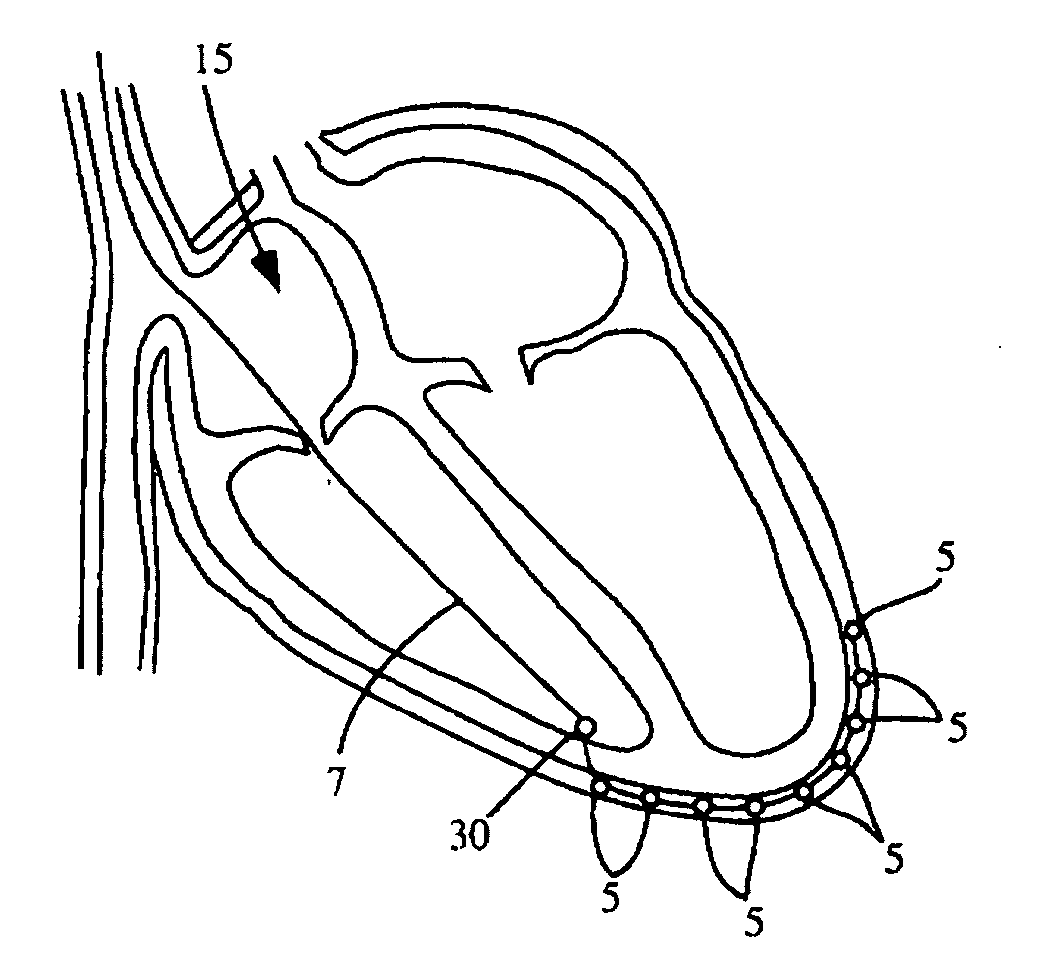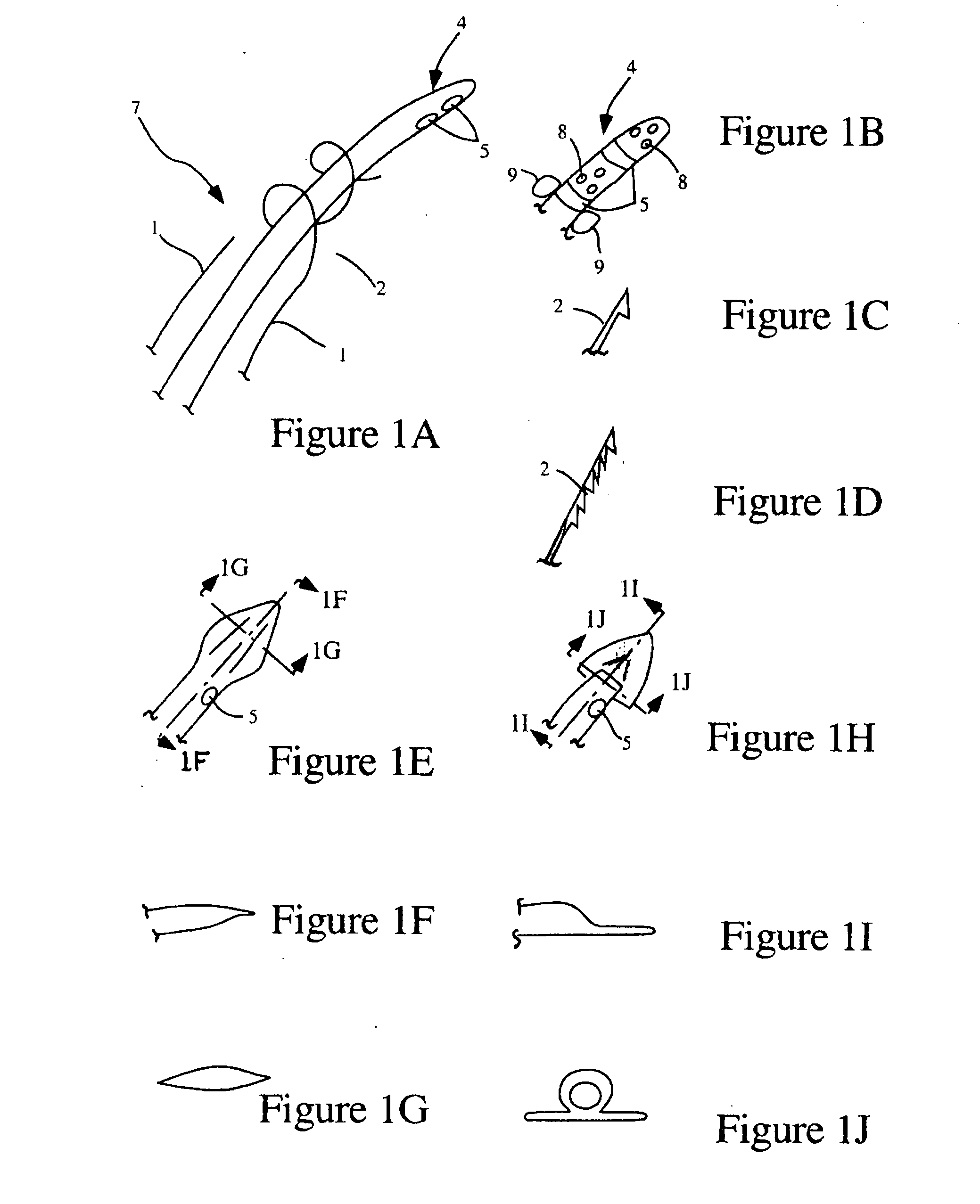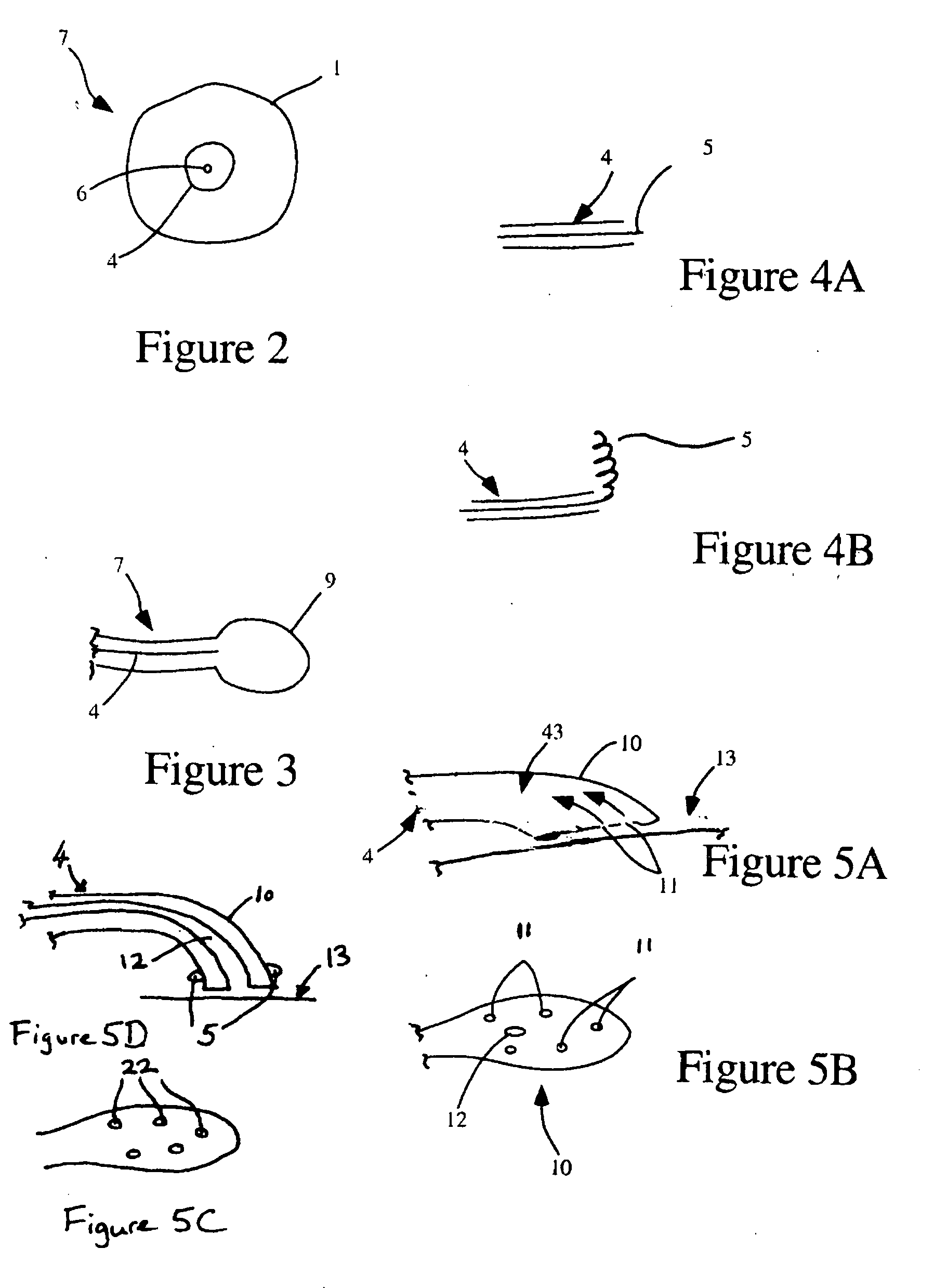Devices and methods for treating cardiac pathologies
a technology for cardiac pathologies and devices, applied in the direction of heart stimulators, internal electrodes, therapy, etc., can solve the problems of inefficient pumping of blood out of the heart to the rest of the body, inability to meet the needs of patients, and limitations of placement of lv leads, so as to improve heart function and improve heart function.
- Summary
- Abstract
- Description
- Claims
- Application Information
AI Technical Summary
Benefits of technology
Problems solved by technology
Method used
Image
Examples
examples
[0232] The invention will be more readily understood by reference to the following examples, which are included merely for purposes of illustration of certain aspects and embodiments of the present invention and not as limitations.
example i
Adhesive Compounds
Experiment #1: To Find a Good Adhesive to Attach a Device to the Heart Wall
[0233] Several adhesives were tested for their suitability in the present invention. Bond strength was tested by using the adhesives to attach a piece of RNF-100 ⅛ heat shrink tubing to a wet myocardium. The bond strength was checked after 30 minutes. The results are as follows:
TABLE 1Type of adhesiveBond strength after 30 minutesArctic Silver Thermal AdhesiveLowKRAZY GLUEMediumIPS Weld-On #16Very lowGOOP Household Contact AdhesiveVery lowLOCTITE 4011GoodLOCTITE Quick Set EpoxyLow
[0234] Based on the above results, a cyanoacrylate LOCTITE 4011 was chosen for further experiments.
experiment # 2
Experiment #2: To Demonstrate Proof of Concept of Using an Adhesive to Attach a Device to the Epicardium.
[0235] In this experiment, a length of RNF-100 ⅛ heat shrink tubing was used as an example of a device. Distal end of the tubing was plugged. A series of perforations were done on the distal region of tubing by a needle. The distal end of the tubing was placed on wet epicardium (13). A cyanoacrylate adhesive (LOCTITE 4011) was injected through the proximal end of the tubing using a syringe (51). The adhesive traveled down the lumen of the tubing and emerged out of the perforations (8). The strength of the bond between the tubing and epicardium was checked after 30 minutes. (See FIG. 30.)
[0236] Results: A device could be firmly attached to wet epicardium using an adhesive.
PUM
 Login to View More
Login to View More Abstract
Description
Claims
Application Information
 Login to View More
Login to View More - R&D
- Intellectual Property
- Life Sciences
- Materials
- Tech Scout
- Unparalleled Data Quality
- Higher Quality Content
- 60% Fewer Hallucinations
Browse by: Latest US Patents, China's latest patents, Technical Efficacy Thesaurus, Application Domain, Technology Topic, Popular Technical Reports.
© 2025 PatSnap. All rights reserved.Legal|Privacy policy|Modern Slavery Act Transparency Statement|Sitemap|About US| Contact US: help@patsnap.com



